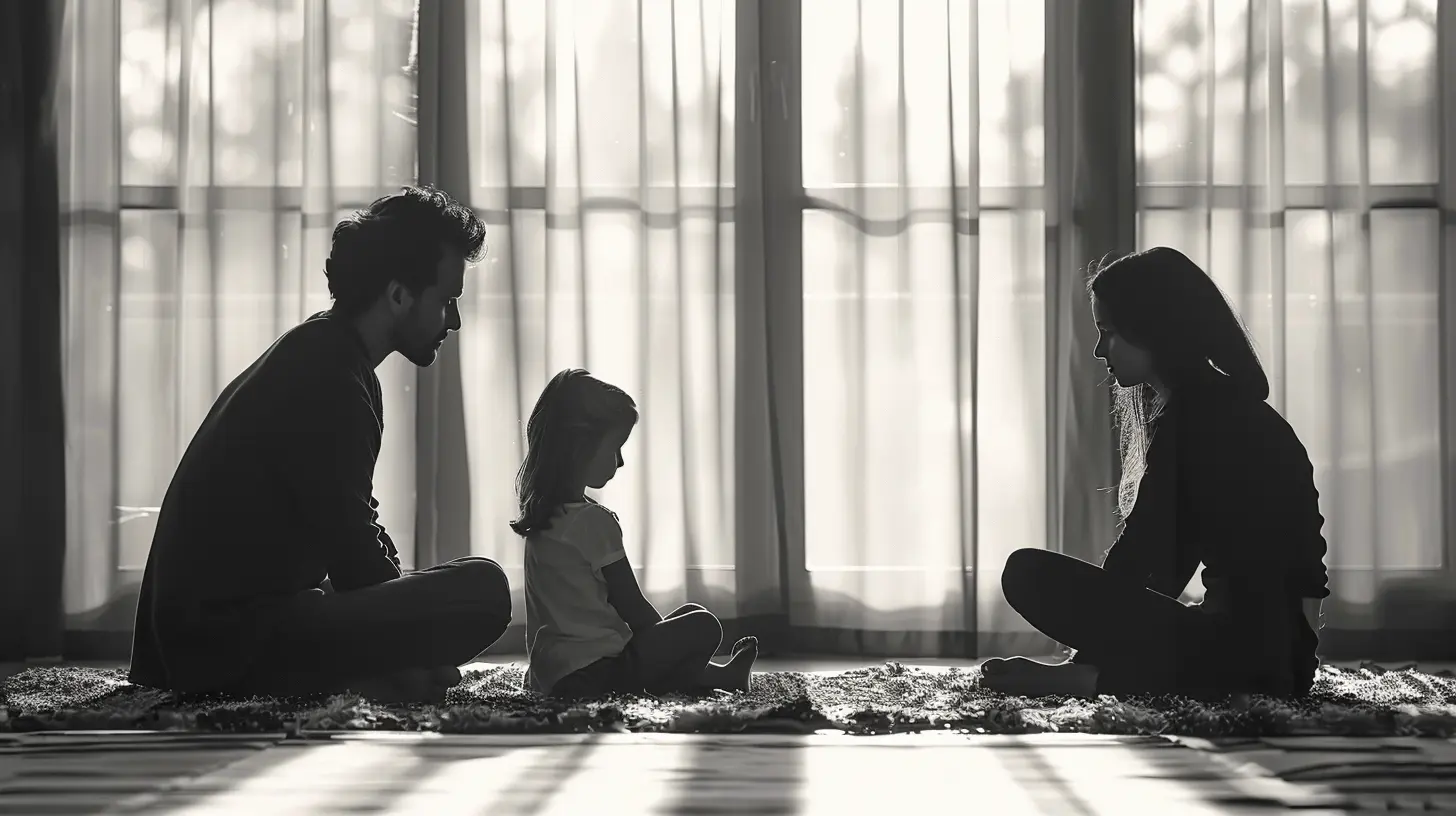Setting Boundaries in a Blended Family: Why It’s Crucial
13 November 2025
Blending families is no walk in the park. You’re essentially merging two different worlds—with their own norms, habits, and histories—into one home. It’s like trying to fit mismatched puzzle pieces together. Eventually, with time and patience, they fit beautifully. But what makes it all come together? One simple word: boundaries.
Let’s be real. When it comes to raising a blended family, emotions can run high—and confusion even higher. That’s why setting clear, respectful boundaries isn’t just helpful; it’s absolutely essential. It lays down the framework for mutual respect, peaceful coexistence, and emotional well-being. In this post, we’re diving deep into why boundaries in blended families matter and how you can set them without stepping on anyone’s toes.
What is a Blended Family?
Before we get into the nitty-gritty of setting boundaries, let’s clear up what a blended family actually is. A blended family, also known as a stepfamily, forms when two people bring children from previous relationships into a new shared family dynamic. Sometimes, these families include biological children from the new partnership as well.It sounds lovely in theory—more love to go around, right? But in practice, it can be complicated. With different parenting styles, past wounds, and shifting roles, it’s no surprise that boundaries become the secret ingredient to making everything work.
Why Boundaries are Non-Negotiable in Blended Families
1. Prevents Role Confusion
Let’s picture this. You’re a stepmom trying to help your partner discipline their teenage son, but the teen snaps back with, “You’re not my mom!” Ouch.When roles aren’t clearly defined, power struggles and resentment are bound to pop up. Boundaries help each family member know where they stand. Who’s responsible for what? What role does each parent or stepparent play? Boundaries draw the lines and give everyone clarity.
2. Builds Trust
Trust doesn’t happen overnight—especially in blended families. There may be past hurts from previous relationships, or kids might be bitter about the divorce or changes at home. Setting boundaries shows that you respect each person’s space, emotions, and individuality.When kids see that adults are consistent and respectful with rules and roles, they start to feel safer. That’s the foundation of trust.
3. Encourages Emotional Safety
Let’s face it, kids (and adults) need to know where the emotional landmines are. When boundaries are clear, family members are less likely to overstep or unintentionally hurt one another. Emotional safety comes from knowing “what’s okay” and “what’s not okay.” Think of it like emotional traffic lights: red means stop, green means go, and yellow means proceed with caution.4. Reduces Conflict
Conflicts usually happen when expectations and reality clash. Boundaries set realistic expectations that everyone can work with. When everyone’s on the same page, it cuts down on misunderstandings, arguments, and stress.
Types of Boundaries Every Blended Family Needs
Now that we know why boundaries matter, let’s break down the types of boundaries that are crucial in a blended family.1. Parental Boundaries
Who disciplines the kids? Who handles bedtime routines, schoolwork, and screen time limits?In blended families, this can get tricky. Biological parents often want to maintain authority over their own kids, while stepparents may feel left out or unsure of their role. It’s important for both partners to openly discuss and agree on parenting responsibilities—and then communicate a united front.
💡 Tip: Don't rush the stepparent into a disciplinary role. Let the relationship with the child naturally evolve first.
2. Personal Boundaries
Everyone, regardless of age, needs personal space—physically and emotionally.Kids may need their own rooms or quiet zones. Parents and stepparents may need alone time to maintain their relationship. A teen might not want to talk about their day right away, and that’s okay. Respecting personal boundaries teaches mutual respect.
3. Emotional Boundaries
These are all about protecting feelings and avoiding emotional manipulation or guilt-trips (because let’s be honest, those happen).Encourage open and respectful communication. Let everyone express feelings without fear of being judged or silenced. Validate, don’t diminish. Boundaries around sensitive topics—like ex-partners or visitation schedules—also fall into this category.
4. Relationship Boundaries
This applies to the couple, co-parenting arrangements, and even family and friends from the outside.New couples often feel torn between partner loyalty and kids' needs. Meanwhile, ex-spouses may unintentionally (or intentionally) cross boundaries. Setting limits on communication, time spent, and involvement from extended families helps protect your marital relationship while respecting co-parenting arrangements.
How to Set Healthy Boundaries That Stick
1. Communicate Openly and Often
Sit down as a couple first, then as a full family when appropriate. Use “I” statements—like “I feel unheard when decisions are made without me” instead of “You never include me.” This reduces defensiveness and opens the door for honest dialogue.Remember: Communication isn’t a one-time event. It’s an ongoing process.
2. Establish Family Meetings
Sound cheesy? Maybe. But family meetings are a great way to check in, air frustrations, and celebrate wins. Keep it casual—make it a pizza night or ice cream party. Let everyone, even the youngest kids, have a voice.3. Be Patient and Flexible
Boundaries won’t magically fix everything overnight. They take time to sink in—and sometimes adjustments need to be made. Stay flexible and open-minded. If one approach doesn't work, tweak it.Think of it like tuning a guitar. You may need to adjust each string (or relationship) a few times to find harmony.
4. Present a United Front
Kids, like little boundary ninjas, will test the limits—especially if they sense that one adult is more lenient than the other. Parents and stepparents need to back each other up. Disagreements can happen behind closed doors, but in front of the kids? Unity is key.5. Respect the Past While Building the Future
Stepparents, especially, may feel like the outsider trying to "replace" a biological parent. But remember, the goal isn’t replacement—it’s addition. Let kids honor their past relationships while creating new ones. Boundaries help everyone navigate this delicate balance.Common Boundary Pitfalls (And How to Avoid Them)
❌ Pitfall 1: Overstepping Parental Authority
You’re eager to be involved, but if you jump into parenting too quickly, you might step on toes. Solution? Start by building trust and emotional connection first.❌ Pitfall 2: Neglecting Your Own Needs
Parents often pour so much into making things good for the kids that they forget about themselves. Set boundaries around time, self-care, and couple-time. A happy parent makes a happier home.❌ Pitfall 3: Letting Guilt Take the Wheel
Divorce guilt, remarriage guilt, step-parenting guilt—it’s real. But making choices out of guilt often leads to loosening needed boundaries. Follow your parenting gut, not the guilt.Involving the Kids in the Process
Kids may not always like boundaries, but that doesn’t mean they shouldn’t have a say. Invite them into the conversation. Ask:- “What makes you feel safe at home?”
- “Is there something you wish adults understood better?”
- “Are there rules or routines that feel unfair?”
Their input helps them feel seen and increases the chances they’ll respect the boundaries set.
What Healthy Boundaries Look Like in Action
Let’s wrap this up with a few real-life examples of what healthy boundaries can look like:- A stepdad knows not to discipline his stepdaughter without talking to her mom first.
- A teen has the right to decorate their room how they want—as long as it follows basic house rules.
- A mom and stepdad agree not to speak negatively about the ex in front of the kids.
- A couple sets aside one night a week for “no-kids” date night.
- A stepmom doesn’t attend parent-teacher conferences unless invited by the child or other parent.
Final Thoughts
Setting boundaries in a blended family won’t erase all challenges, but it gives everyone a map to navigate this new terrain. It’s not about creating walls—it’s about building respectful fences that guide behavior and protect hearts.And remember: Boundaries aren't meant to box anyone in. They're meant to create a safe, respectful space where trust can grow, love can flourish, and everyone can feel like they belong.
So, whether you're a parent, a stepparent, or a kid navigating this blended life, embrace boundaries. They might just be the glue that holds your new family together.
all images in this post were generated using AI tools
Category:
Blended FamiliesAuthor:

Karen Hurst

